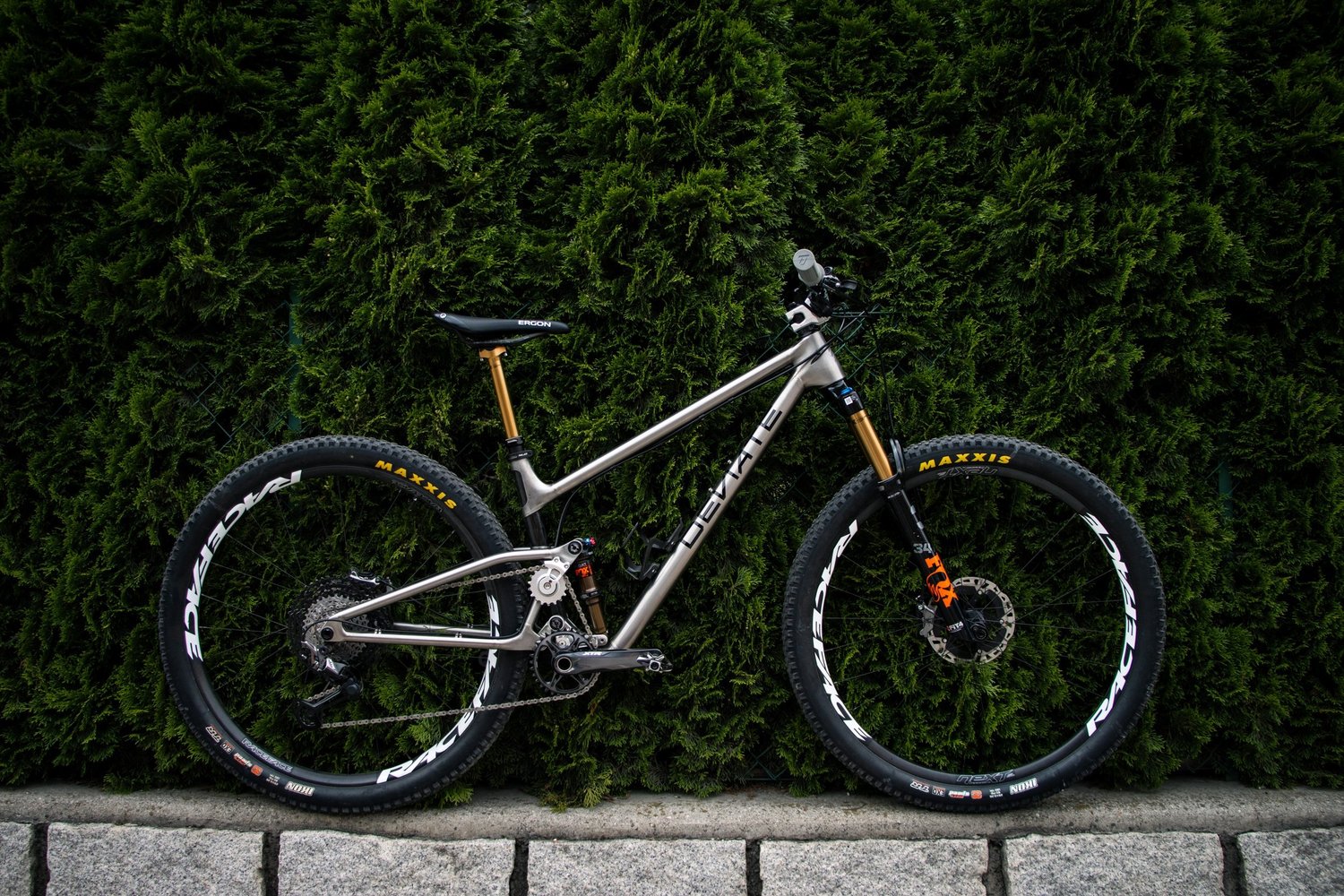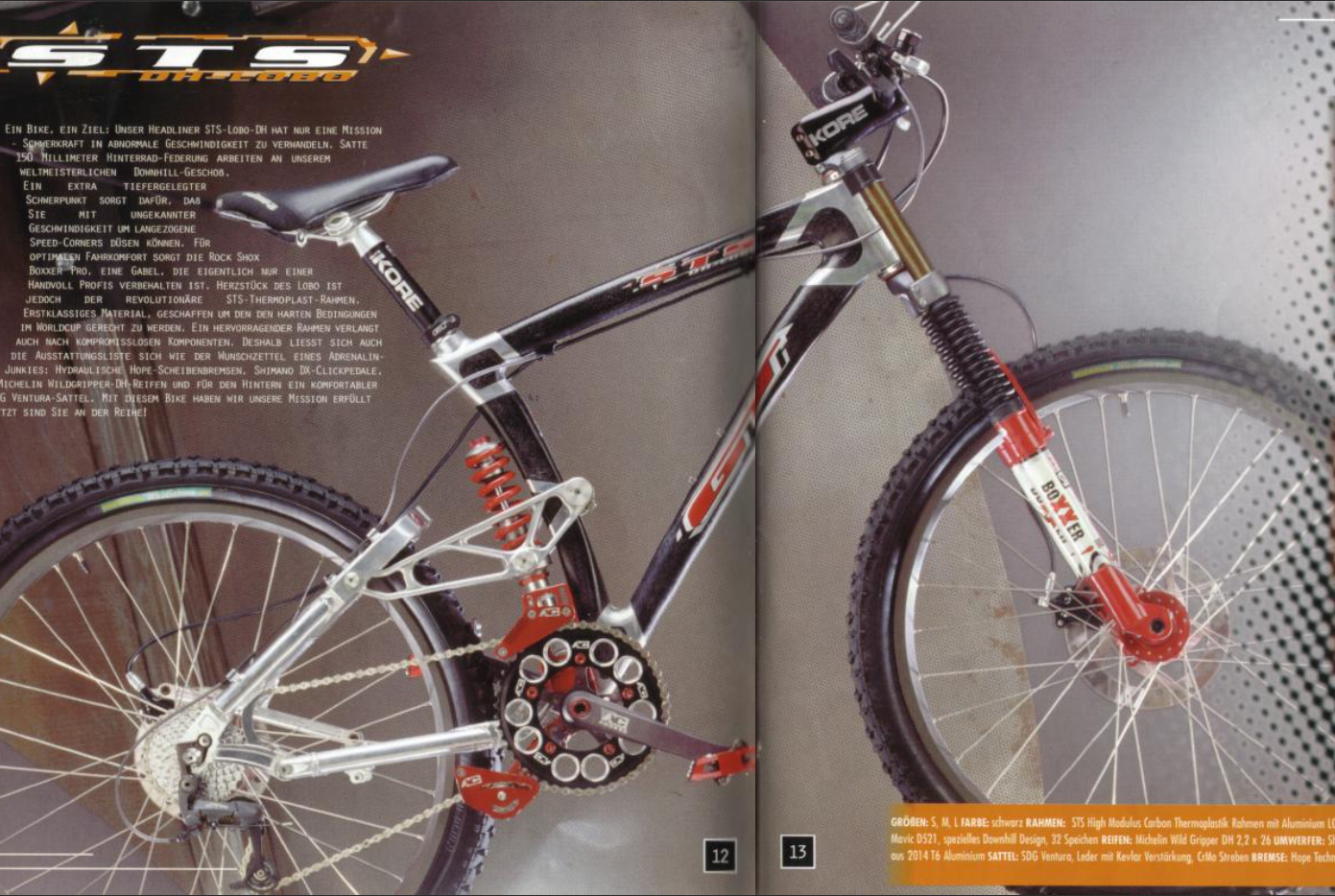No matter how innovative or controversial a given mountain bike technology may be, it’s usually just a means to an end. A way to add efficiency or capability. Sure, these technologies can often make for utterly spectacular rides. But bikes themselves—especially full-suspension bikes—rarely add any soul purely for soul’s sake.
That may be why we love to highlight bikes like the REEB SST, Chromag Darco, and, of course, the Starling Murmur. These bikes have esoteric quirks usually found only on hardtail, gravel, and town bikes. And they just happen to also offer utterly spectacular rides.
But when Travis Engel noticed function-first stalwarts, Pivot and Specialized suddenly teasing in-house experiments in lugged carbon fiber, he wondered if there might be a new search for soul afoot…


Lugged carbon mountain bikes are not new. Trek, Specialized, and Giant/Cadex took early steps into carbon MTB using round carbon tubes joined by aluminum or titanium lugs. Later, near the peak of GT’s technological dominance, came its aluminum-lugged thermoplastic “STS” frames, which were … not good.
And then there was the spate of bonded-in carbon seatstays that briefly bled from road into XC. But the goals of each of these efforts were ultimately met by the carbon manufacturing methods we use today. And yes, I know that some of today’s traditional-looking full carbon bikes are technically still held together with carbon lugs, but I’m talking about the sudden resurgence of metal-lugged carbon that seems to be driven by entirely different goals.
Or rather, multiple different goals. Exactly what they are depends on who you ask.


The bikes that have gotten the most press lately are ones that are probably starting and ending each ride in a laboratory. These are the experimental lugged carbon test mules unveiled through some expert protohyping by Specialized and Pivot. This was in the peak of 2023’s race season, when you’re likely to see new frames skinned in zebra stripes or new linkages cloaked under neoprene. The mysterious Specialized ridden by Loic Bruni features the latter.
But Specialized is not being shy about the rest of the bike. So much so that they had it on full display in the window of EVO’s Whistler Village location during Crankworx, which is where a correspondent got us these stellar cell-phone images. It’s got nothing to hide because this frame probably looks nothing like how it’ll look once it goes to production.
According to Steve Saletnik, Specialized’s Senior MTB Product Manager, prototyping with lugged carbon is simply the fastest way to get there.

“Because all of the parts are manufactured on-site, if we want to try something—move the geo in a different direction or try something with a modified kinematic—everything is open and on the table for us.”
In-house prototyping is nothing new, but Saletnik was being coy about exactly how new lugged carbon prototypes were to Specialized. The best we got was that “The tools we have to build these DH bikes are employed in a variety of different ways to help us in the R&D process.” He did add that one of those tools was a “wicked-awesome five-axis CNC,” making it clear at least that the lugs and metal components on this particular prototype aren’t produced through additive manufacturing.

CNC machining also happens to be how Pivot constructed the lugs on their prototype DH bike, ridden by Bernard Kerr in some of the same races as Loic Bruni’s Specialized. I talked to Pivot’s founder, CEO, and all-around man-behind-the-curtain Chris Cocalis about the story behind their prototype high-pivot bike.
“Up until last year, we made all the prototypes out of aluminum,” Cocalis reveals. “We started experimenting a few years ago with going straight to a full monocoque design for the prototypes but the development time was just too long and each iteration was like starting over.”
But making prototypes out of aluminum was no picnic either.
“The time to send [an aluminum frame] off for heat treat, alignment, and final machining [ ] adds considerable time.”
Just like Specialized, Pivot’s use of lugged carbon allows them to control pretty much every step of the process in-house, and to do it quickly. But unlike Specialized, Pivot’s lugged carbon prototype uses tubes that are contoured and tapered, not round.
“This is really the larger aspect of what we are doing that is a major differentiator from most tube and lug carbon prototypes,” Cocalis tells us. “We are machining molds for close-to-production shapes and then developing what we expect to be near production layups in the tubes.”

This is an underappreciated aspect of frame development. A lot of thought goes into where a frame needs to be stiff and where it needs to be compliant. Even once an overall shape is decided on and molds are cast, carbon frames will still go through a period of trial and error as the manufacturer decides on the layup that will achieve the desired ride feel.
Though the tubes on the Specialized prototype appear to be round, Saletnik did tell me they’re making those tubes in-house with a particular ride quality in mind. But when the prototypes are assembled with lugs, experiments with geometry and pivot location can be done hand-in-hand with ride feel.
Especially when the final product is destined to be made of carbon, this will likely become a popular way to prototype. Who knows, maybe it already is. Prototypes are supposed to be secret, after all, so we probably won’t be seeing many in the wild … unless we’re talking about production lugged carbon.

If you haven’t already, have a look at Morgan Taylor’s story about the design and manufacturing of his Framework Bicycles dream machine. It explores the possibilities lugged carbon offers in custom road-bike geometry. But there’s an interesting half-step being offered by U.K. frame manufacturer Atherton Bikes.
Named for the dominant trio of sibling racers, Rachel, Dan, and Gee, Atherton Bikes makes—and sells—carbon frames held together by 3D-printed titanium lugs. And they sell their frames in as many as 22 sizes. That’s twenty-two. Or if you really want it, they’ve also got fully custom options.


“Additive manufacturing is the key thing in all of it really,” says Atherton co-founder, Dan Brown. “It allows us to do two things. One, is we’re able to build that lug to whatever geometry we want within a certain range. Two, is to deal with all the complex loads and stresses through the titanium lugs.”
Those complex loads have come up a lot in this discussion. I had assumed that, if carbon offered benefits in strength and ride feel, it must be a benefit in the whole frame. But that’s not necessarily true.
“If you think about a head tube joint, for example,” explains Brown. “It’s a very intricate shape to bend a carbon sheet into. Whereas we’re telling a printer to print a 60-micron layer. We can get it to print as thick or as thin as we want.”

Additive manufacturing also allows for some really intricate shapes. Just look at John’s story about the REEB SST. Atherton’s lugs include a lot of that same complexity, but also offer what’s called a “double-lap shear joint.” Basically, unlike bonding a PVC pipe into a joint where the adhesion happens only on the outside of the pipe and the inside of the joint, a second inside layer in the lug bonds the carbon tube on both the inside and outside.
It’s one way to address my main concern with lugged carbon, where instead of hundreds of interlocking panels each bonded on each side to each neighboring panel, lugged carbon tubes are bonded together over just a few square inches. Atherton, at least, seems to have come up with a pretty trustworthy solution.
“From the strength perspective, we’ve had zero failures on the joints,” Brown tells me. “And we’ve made 400 frames.”


Zero percent is an impressive failure rate, but somehow, 400 frames doesn’t sound like a lot. And compared to Specialized, it isn’t. But to say metallic additive manufacturing is in its infancy would be an understatement. There’s a reason that the Specializeds and Pivots of the world are only looking at lugged carbon as a method for building prototypes, and why machining their lugs makes more sense for them than 3D printing.
They don’t need the scalability of additive manufacturing. Those bikes aren’t numbering in the hundreds, or even dozens. And when it’s time to go to production, traditional carbon manufacturing will remain the most practical choice for the foreseeable future. This is the sort of change that will start small. And maybe it should.
“I don’t want to speak foul of the traditional Taiwanese model,” says Brown. “It’s brought the whole industry in a place to offer affordable, lightweight and relatively strong bikes.”
But Brown acknowledges that there are numerous quality-control points required to make those bikes safe. That process is easier when production is in-house, and in-house production is more economically feasible when lug and tube production can be largely automated. Brown sees this possibly changing that import-based model he mentioned, at least for complete bikes.
“Ultimately, what we want to do in the long term is close-to-market production process, which means we’d be setting up small factories around the world that can deal with the local markets, and you can have your bike assembled and built close to home.”



This happens to be much of what motivated Deviate Cycles to develop the frame they teased at Eurobike earlier this year. It’s a combination of additive manufacturing and lugged carbon that they believe could bring frame production back to their home country of Scotland.
And there are plenty of other brands offering up their own takes on what can be done using metal lugs. When Spencer Harding covered the ENVE Grodeo, there was a Pinion-equipped bike from Bend, Oregon-based Viral Bikes featuring 3D-printed titanium lugs and carbon tubes.
Even our pals at Starling Cycles have dipped their toe in. And are using thermoplastics, no less. But it’s on an E-MTB, so you probably wouldn’t be interested. Point is, this could become a more accessible way to make carbon frames in-house and in small quantities. These examples are only the high-profile highlights that have surfaced in recent months.
I can only imagine the clever things being created by the many mad scientists pushing the envelope in homegrown frame design.


It’s too early to tell where this is headed. Sounds like additive manufacturing will play a role in the growth of lugged carbon mountain bikes, and we’re just beginning to understand that whole world’s promise and limitations. If 3D printing continues to become more practical and affordable, maybe lugged carbon could actually realize its potential for improved fit, optimal ride quality, and localized manufacturing.
Or, if not, maybe lugged carbon will just simplify the prototyping process. Either way, good ol’ metal lugs might play a part in your next carbon bike. Hopefully that’ll give it some soul.












































